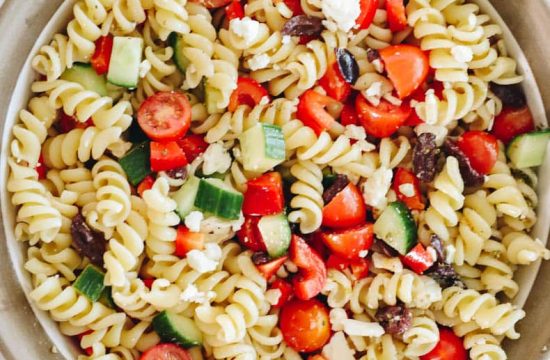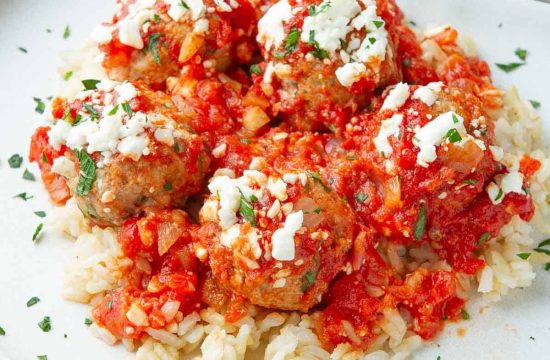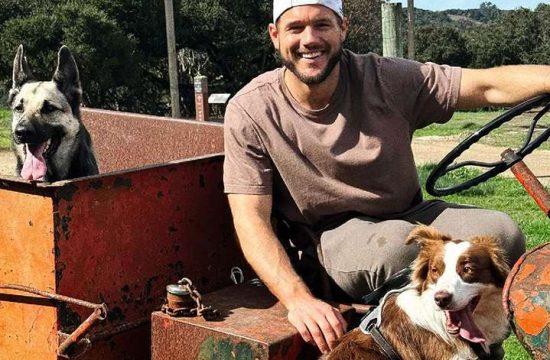Since the evolution of human species, herbs were natural part of human food choices. Similarly, human beings naturally started using herbs for the purpose of healing as well.
Origin of use of herbs as medicine in pre-historic period
Stone age man lived in forests in harmony with other animals and learnt everything from nature. He gradually made out that the other animals and birds eat the greenery around to get rid of their ailments. Initially he too consumed the plants in their natural form which marks the origin of Ayurveda. As he grew cultured and intelligent by his experience, he tried to make those medicinal plants more palatable & more pleasing to his sense organs. This led to the origin of usage of herbs for treating diseases.
A Sumerian clay slab found in Nagpur, estimated to be 5000-year-old, contains information about 12 herb recipes. It contains reference of more than 250 plant species such as Ahiphena.
The Chinese herbal book “Pen T’Sao,” written by Emperor Shen Nung circa 2500 BC, mentioned 365 herbs including camphor, cinnamon, ginseng, ephedra etc.
Ebers Papyrus, a document dating back to around 1550 BC mentioned 700 medicinal plant species such as pomegranate, castor oil plant, aloe, senna, garlic, onion, coriander, etc.
In Homer’s epics The Iliad and The Odysseys, written around 800 BC, 63 plant species from the Minoan, Mycenaean, and Egyptian Assyrian origin are mentioned.
Reference: Petrovska BB. Historical review of medicinal plants’ usage. Pharmacogn Rev. 2012 Jan;6(11):1-5. doi: 10.4103/0973-7847.95849. PMID: 22654398; PMCID: PMC3358962.
In Indian history, The Vedas, written more than 5000 years ago mentioned a variety of herbs for food, spiritual rituals and also for medicines. Some examples of Vedic herbs are – Sandalwood, Jasmine, Tulasi, Neem, Ashwattha, Kushta, Pippali, Khadira, Apamarga etc.
Out of the four vedas, Atharva Veda contains maximum number of herb references. These references include praying the herbs to heal diseases and also using them orally for healing. Single herb usage was more prevalent than poly-herbal preparations.
Dosage form examples in Vedas
Rigveda
Somarasa prepared with swarasa kalpana is mentioned.
Ayushyani are those that are used to achieve longevity and health, whereas
Bhaishajyani are those that are used to treat ailments.
The herb known as “Soma” has been mentioned frequently and is regarded as the best medication among natural remedies. According to Rigveda, the juice of soma has a sweet flavour and nectar-like properties that help avoid death. It is also claimed that it can give the deaf the ability to hear, the blind the ability to see, and the lame the ability to walk. In addition to Soma rasa, the term “Rasa” is used frequently and with a variety of connotations in Vedic literature.
Yajur Veda
धानाः करम्भः सक्तवः परीवापः पयो दधि ।
सोमस्य रूप हविष आमिक्षा वाजिनं मधु ॥ (यजु.१९/२१)
dhānāḥ karambhaḥ saktavaḥ parīvāpaḥ payo dadhi |
somasya rūpa haviṣa āmikṣā vājinaṃ madhu || (yaju.19/21)
The Yajurveda contains reference of Dhana, Karambha, Saktu, Parivapa, Paya, Dadhi, Soma, Aamiksha, and Madhu, which suggest that the text reflects contemporary knowledge.
Atharva Veda
Kalka made up of poison, mixing poison with water, preparing oil with poisonous herbs for usage in warfare.
Different types of sura, madya, mantha, dugdha, dadhi etc. are mentioned.
Brahmana grantha – Fermentation procedure is mentioned.
Shatapatha Brahmana –
Maitra Varuni payasya – Similar to paneer
Vajina – Supernatant liquid of the curd or dadhimastu
People in the Vedic period were aware of āhāra kalpas. The mention of yajña kalpas like Haviss, Odana, and Dhānā serves as evidence for this. In the Vedic period, we can discover numerous “Auşadha” and “Ahara” kalpas, demonstrating the awareness of the preparation of many kalpas.
Time of Upanishat
In Brihat Aranyaka Upanishat, cooking meat with rice and ghee, ghrita kalpana, mantha kalpana are mentioned.
In Manusmriti, different types of meat are mentioned.
In Mahabharata, maireya, fish and many such other dishes are mentioned.
In Ramayana, meat, alcohol, wine etc. are mentioned. Lord Dasharatha’s body was preserved in Tailadroni.
Development during Samhita period
During the Samhita period of Ayurveda, Bhaishajya Kalpana was not a part of Ashtanga – the eight branches of Ayurveda.
Charaka Samhita period
In the 4th chapter of the Charaka Samhita – Sutrasthana, there is a thorough explanation of “Panca Vidha Kashaya Kalpana”. Phāṇita, sidhu, surā, sauvīra, tuṣodaka, maireya, medaka, dhānyāmla etc. preparations are discussed in Charaka Samhita – Sutrasthana – chapter 15, while sauvria preparations are discussed in chapter 25.
Dietary preparations such as Manda, Peya, Vilepi are described.
The extraction of taila and taila pāka, as well as tests and criteria for taila paka, are covered in detail in the seventh chapter of Vimana Sthana.
Numerous Rasayana Kalpas and their various pharmaceutical forms are listed in the first chapter of Charaka Samhita – Chikitsa sthana, including Churna, Avaleha, Aushadha Siddha Ghrita, Ksheera, Kshaudra, Guda, Yoosha, Taila etc.
Charaka Samhita – Chikitsa sthana – seventh and sixteenth chapters respectively explain kṣāra kalpanā and vaṭaka kalpanā.
In Kalpa sthana, a number of preparations, including kashaya, kshirapaka, taila, ghrita, phanita, churna, varti, leha and modaka, which are helpful in panchakarma are explained. Some pharmaceutics principles are stated in the 12th chapter of Kalpa Sthana, along with weights and measures.
Sushruta Samhita period
Six other basic kalpas are stated in the 44th chapter of Sutrasthana. Acharya Sushruta mentioned six as basic dosage forms viz,
kṣīra, svarasa, kalka, śṛta, śīta, and phāṇṭa –
These are considered to be laghu in ascending order. Kṣīra paka, the heaviest preparation of all for digestion, has been added as an additional form of kalpana.
Detailed description of Kshara kalpana as part of Shalyatantra procedure is a big contribution of Acharya Sushruta to Bhaishajya Kalpana.
Ashtanga Samgraha and Ashtanga Hridaya period
The descriptions of pharmaceutical preparations in these writings are comparable to those in the Charaka Samhita and Sushruta Samhitas.
Bhaishajya Ratnavali period
In the jwara chikitsa the concept of “Murchana Samskara,” of oils and ghee is mentioned. The Murchana process of tila taila, eranda taila, sarshapa taila and ghrita are explained.
Murchana samskara is intended to improve the color, odor and qulaities of ghee or oils. Even today many pharmaceutical companies do the murchana first and then use the murchita oil or ghee to prepare taila and ghrita yogas.
Sri Govindadasa, the author of Bhaishajya Ratnavali is credited for adding many new herbal and herbo-mineral formulations to Ayurvedic pharmacopeia.
Sharangadhara Samhita period
This text was written by Śārṅgadhara miśra, who lived in the 14th century A.D.
In Prathama khanda, time for medicine administration, shelf life, weights and measurements are explained.
In Madhyama khanda, each chapter is dedicated to different dosage forms, such as –
1st chapter – swarasa kalpana
2nd chapter – kwatha kalpana
3rd chapter – phanta kalpana
4th chapter – hima kalpana
5th chapter – kalka kalpana
6th chapter – churna kalpana
7th chapter – vati kalpana, includes guggulu kalpana
8th chapter – Avaleha kalpana
9th chapter – sneha kalpanqa
10th chapter – sandhana kalpana – Asava arishta
11th chapter – dhatu – upadhatu shodhana marana
12th chapter – parada
In the above chapters, secondary dosage forms are mentioned. For eg: for kwataha ksheerapaka, yavagu, paneeya kalpana, yoosha, ushnodaka , bhakta kalpana, manda
For phanta kalpana – mantha kalpana is explained as secondary dosage forms.
For each dosage form,
elaborate method of preparation,
proportion of individual components,
Different types of pakas wherever applicable
anupana, prakshepa, matra
varieties of examples for different medicines with their ingredients, method of preparation, dose, anupana, indications etc. are mentioned.
Madhyama khanda is specifically focused on the study of pharmaceutics.
He was the first to mention pharmaceutical preparations, their general principles etc. in a methodical and comprehensive way all in one place.
In madhyama khanda, each type of preparation has been defined along with its preparation process, dosages, anupanas, and numerous formulations.
Yogaratnakara period
Yogaratnakara mentions when different drugs first appeared in specific Ayurvedic texts.
It has provided additional useful information regarding pharmaceutical preparations and their administration.
It also includes explanations regarding panchavidha kashaya kalpana, preparation of Asava, arishta, Avaleha etc.
This book mentioned the drugs adopted by earlier scholars from foreign countries. Eg: Ahiphena, Akarakarabha etc.
Mentioned use of Bhanga or Vijaya in different formulations. Eg: Sidhuradi Yoga
There is reference of foof preparations like Polika, Vataka, Kanji, Panaka, Ragakhandava, Veshavara etc.
Shali, Shashtikashali, Yava, Godhuma etc. are mentioned under dhanyavarga.
Chanaka, Mudga, Adhaki, Masura etc. are mentioned under Shimbi dhanyavarga.
Karavellaka, Changeri, Vartaka, Kooshmanda, Mehika, Vastuka, Brihati, Tanduliya, Kakamachi, Patola etc. are mentioned under Shaka varga.
Narikela, Kadali Amra, Kharjura, Draksha, Amalaki, Dadima, Vatama, Jambu, Pilu etc. are mentioned under Phala varga.
Ekala dravya prayoga in many diseases has been mentioned.
Mentioning of Abhava pratinidhi dravya is also seen in this text.
Kutajadyavaleha, Sitopaladi churna, Saindhavadi yoga, Shatavari ghrita, Gandhaka Rasayana etc. formulations are mentioned.
Bhavaprakasha period
Bhavaprakasha text shared the same perspective as Acharyas Charaka and Sushruta on the fundamental preparations of medications.
Bhavaprakasha elaborated various dishes such as Roti, Puri, Dal, Papad, Sharbat etc. in Krutanna varga section of Bhavaprakasha Nighantu.
Pre and post independence periods
In the 14th century, new forms of ayurvedic medication were introduced after ‘Śärangadhara (14th century A.D.) such as Śarabats, pānakās, malaharās, and arkas.
In the 1960s, Ayurveda Sara Sangraha book was published, which explains Rasashastra and Bhaishajya Kalpana medicines for various disorders, Arka kalpana, Sharbat kalpana, Khanda kalpana, Kshara, Lavana, Satva like Adarak Satva, Kutaja Satva etc. Special Asavas like Kumaryasava No. 1,2,3,4, Balanta Kadha, Meetha swadisht churn, Shweta Malham, Gulabi Malaham, Netra rogahara malaham etc.
The Ayurveda Sara Sangraha book is the first Hindi book to be recognised as authentic, traditional Ayurvedic text in the first schedule of Drugs and Cosmetics Act, 1940.
Compilatory works like Bharata Bhaishajya Ratnakara and brihat Nughantu Ratnakara compiled thousands of Ayurvedic medicines of both Rasashastra and Bhaishajya Kalpana in an alphabetic order.
The Drugs and Cosmetics Act, 1940 and The Drugs and Cosmetics Rules, 1945 have mentioned standard rules and regulations for the manufacturing of Ayurvedic medicines.
With the development of modern technology, Ayurvedic pharmaceutical companies have started using new machineries to make ayurvedic medications such as pulverisers, tablet compression machines, grinders, juice extractors, mixers, driers, etc.
Many new dosage forms such as lozenges, capsules, syrups, dispersible tablets, liniments etc. are added to Bhaishajya Kalpanawith the advent of preservatives and additives. Many dosage forms have longer shelf life. Ex: Syrups, Kashayas, Avalehas etc.
Modern packaging and labelling techniques have extended the quality and shelf life of Ayurvedic medicines.
Thus, the core Ayurvedic pharmaceutical formulations and ideas described in our classics are still in use today. The discipline of Ayurvedic pharmaceutics has just recently been introduced to modern methodologies, tools, and standardization procedures.















